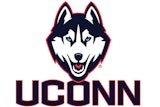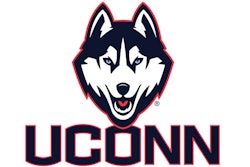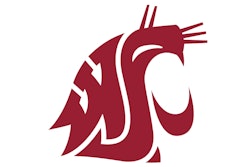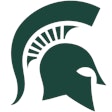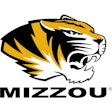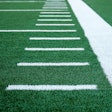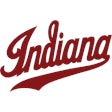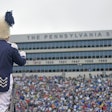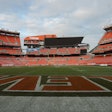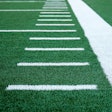![[Photo courtesy of Qualite]](https://img.athleticbusiness.com/files/base/abmedia/all/image/2020/08/ab.lighting720_feat.png?auto=format%2Ccompress&q=70&w=400)
Sports facilities were kept in the dark for much of the spring. Stadium lights remained off as baseball, softball and soccer games across the United States were canceled by the COVID-19 pandemic. As stay-at-home orders have slowly been lifted, facility operators are flipping their lights back on to welcome athletes and fans back to fields and stadiums.
"We expect our systems to perform as they did before the venues went dark," says Michael Quijano, director of marketing at Ephesus Sports Lighting. "We would suggest verification of that through some basic system functional testing."
Technological advances have made turning the lights back on relatively simple, whether or not extensive maintenance checks have been made. Quijano says the goal for outdoor lighting maintenance is to eliminate the need for it. As lighting companies and venues have gotten closer to this goal, less maintenance time has freed up venue managers to focus more on using light to enhance the space.
"That's a big change that has taken place within five years for the sports lighting industry — transformational, really," Quijano says, noting that a shift toward light-emitting diodes transformed the maintenance associated with sports lighting. "For decades, sports lighting systems were a sort of maintenance nightmare that venues constantly wrestled with. Today, the thought process is around how can the sports lighting add value to the overall experience?"
Ease of maintenance
"Historically, the entire system would have to be re-lamped every few years. With the introduction of LED, a properly designed and installed solution shouldn't need to be touched at all," Quijano continues. "We have taken the approach of offering a truly solid-state system where there are no mechanical parts that would wear out or need maintenance due to periods of inactivity. For our customers, it will be as easy as flipping the switch or, perhaps more accurately, like booting up their computer."
"That's the key seller for the LEDs, that you're not having to maintain it so many times," Shahil Amin, vice president of sales and marketing at HyLite LED Lighting, says. "Obviously, there could be acts of God or power surges that may take a light out, and you'd need maintenance in that regard. But the key, especially in sports lighting arenas because your burn hours are so low, is that you are going to save a tremendous amount of energy. You aren't using it necessarily enough to offset the cost of the project up front, but where you really see the savings is in the maintenance."
That ease of operation relies on creating a plan and working with a manufacturer intent on maximizing the effectiveness of the project. Michael Kiker, senior vice president of sales and construction services at Qualite Sports Lighting LLC, says that his company has implemented systems to ensure that the products they install remain effective.
"The positive effect of low facility use [during the pandemic] is the ability to perform routine inspections and maintenance," Kiker says, noting Qualite has spent recent months completing upgrades and starting new projects while school events are at a historic ebb. "A pre-check of your lighting system to assure it's 100 percent operational before game day is always recommended. However, the Qualite GameChanger system comes complete with active monitoring, so we make sure that all of our installed lighting systems are 100 percent operational, and if there were a problem, we would schedule our in-house service team to correct any maintenance items.
"I would also recommend that LED systems being considered for purchase should have a remote driver, over current protection, as well as a power conditioner."
Legacy systems
While new products ensure longer warranties and less maintenance, there are still plenty of legacy lighting systems that need to be maintained throughout the United States. Traditional systems like high-intensity discharge lamps and compact fluorescent light bulbs remain highly effective as long as maintenance checks are conducted and system components such as dirty lenses, exposed wires and faulty bulbs are fixed in a timely manner.
"Let's say a school district has a baseball stadium. They can focus a little more on that stuff — being able to change the ballast and the lights — so that it's ready for when they do open back up," Amin says, noting that a decrease in quality can come in several forms.
"You'll notice the lamp depreciation and the flickering a little bit more. You'll notice maybe one or two lights are not as bright as the others, depending on when they were last changed. With an HID system, you have two components that get a light to work: you have the lightbulb itself and you have the ballast, which converts the power into being able to be used for the lightbulb. Not every ballast fails at once, and not every lamp fails at once. So if you have a stadium with 48 lights — 12 lights on four poles — you might have to change a lot of things, whether it's two, four, six, depending on when they were installed and whether or not they're bright anymore.
"To change one lamp or one ballast every single time can be very expensive. And then if you do change all of them at the same time or a bunch of them at the same time, it's a very inefficient way of doing it because you may have good lamps or good ballasts, but you just don't want to pay for the labor again so you change everything at once."
Russ Schroader, vice president of sales and marketing at Sportsbeams Lighting, says that the countrywide shutdowns have allowed facilities an opportunity to update some of their old systems.
"People love live events, and that's not going to change, so now is probably the best time to do that kind of work," Schroader says. "For us, it's retrofitting — taking down energy-hungry, old HID lighting and replacing it with the more energy-efficient, more entertaining LED lighting.
"We've been developing these things for years and proven on every metric — cost, efficiency and maintenance — that LED really is the way to go. That turning point was probably about two years ago."
Nothing lasts forever
Outdoor sports lighting is unique in the hours that it is used, the quality of light that is needed and the distance between where the lights are located and the space they're lighting. Stadium lights also must withstand the elements. Lighting products use the ingress protection rating system to classify the degree of protection provided against elements such as water, dust, accidental contact and intrusion.
"LED chips do not like heat, so the hotter the ambient temperature, the higher the potential for failure and the lower the light output," Kiker says, noting that high-quality products are designed to dissipate heat to keep the system running in extreme climates.
"Heat is absolutely the worst element," Schroader says, noting Sportsbeam's patented products implement three levels of cooling — heat sinks, liquid-filled heat pipes and telecommunications fans — to fight high temperatures. "That's where a lot of fixtures have failed in the past — they have not managed heat.
"If they're not properly integrated into a nice mechanical design that takes away heat and moisture, then those LEDs will fail immediately. When you combine the mechanical side with a good LED, it should last."
Kiker adds that older metal halide technology relied on the life span of the lamp, which was about 3,000 to 5,000 hours on average for a 1,500-watt lamp. Kiker, Amin and Schroader each emphasize that newer products can have a 100,000-hour life, which can go a long way at fields and sports facilities that are only used in certain seasons and at particular times of day.
"I think there is a misconception that LEDs last forever," Quijano says, "but they have to be managed properly from a thermal, electrical, mechanical and optical standpoint to ensure long-term reliability."
While there have been significant improvements, the lighting industry plans to continue advancing its goal of eliminating maintenance while enhancing events.
"LED options have come on the market that offer more than they did just six months ago," Schroader says. "The way we're looking at it now is it's becoming more like stage lighting than anything else. It's a performance. It's no longer throwing light on a field, but it's how it excites a crowd, engages a crowd and even excites the players."
This article originally appeared in the July | August 2020 issue of Athletic Business with the title "Maintaining Sports Lighting Through Unprecedented Downtime." Athletic Business is a free magazine for professionals in the athletic, fitness and recreation industry. Click here to subscribe.














